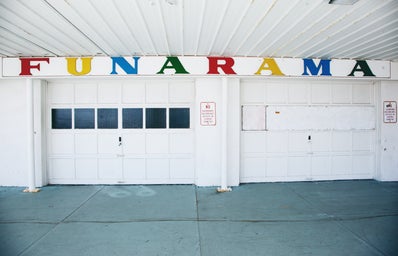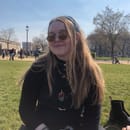While most of us think of burlesque as the glamorous stages, revealing outfits and catchy show tunes portrayed by Christina Aguilera and Cher in their 2010 film, Burlesque, the art form of burlesque actually has a long and complicated history in the U.S. dating back to the 1860s.
Burlesque was originally brought to the U.S. from Great Britain in the late 1860s through dancer Lydia Thompson and her group, British Blondes. The American burlesque scene transformed the art into a performance that captured music hall, comedy and striptease. Burlesque began to become girlie shows in the 1940s-50s. These shows eventually split and became the modern day strip club.
Because of the striptease element of the performance, local laws cracked down on burlesque shows starting in the 1930s. In New York Mayor Fiorello LaGuardia effectively ended the burlesque scene in the 1940s. While it continued in other parts of the U.S. as nudity became more normalized in film, burlesque essentially ended for a period of time after the 1970s.
The neo-burlesque era began to revitalize the lost performance art in hopes to regain the glamour of the past. Burlesque began forming again in the 1990s especially in New York. While particular troops became well known in the N.Y. burlesque scenes, individual performers incorporated burlesque type performances in their acts across the country.
D.C. has its own burlesque scene and you can go see shows regularly. Certain performers and troops throughout the DMV have even created a cult following for themselves. I went to one last semester at Black Cat called “Lystria and Other Tales of Feminist Rage” with my Let’s Talk About Sex Education class. I expected that Christina Aguleria-type show, so needless to say I was very surprised by what the performances were actually like.
The show, as many are, was centered around a theme and each performer did their acts individually. The energy of the crowd was perhaps the most surprising part of the show. Anytime a bra was taken off or an especially expressive dance move was done, the crowd would go crazy with support throwing crinkled up dollar bills on the stage. The environment was one of support, excitement, empowerment and acceptance. The performers were of all different body types, races, gender, and had their own individual spins on the central theme making the show feel diverse and exciting.
The week after the show the producer of the performance and one of the performers came to discuss their views on burlesque with our class. I was surprised to learn about how different burlesque is from what I and many thought it was like. They described how they feel incredibly empowered by doing their performances and how audience members often times come up to them after the show to tell them how their dance made them feel like they could now go do anything. Both said that their inspiration to others is really what makes them do burlesque.
It can be easy to oversimplify why people see or do burlesque. Most think its overtly sexual nature is the main calling card for the performers and audience, but for many, it’s a safe space where they can express themselves, design costumes, work for weeks on their act, work through trauma, feel sexy and essentially help others feel they can do anything they set their minds to. Burlesque has also become a safe haven for many people in the LGBTQ+ community.
But doing burlesque also comes with its challenges. Many burlesque performers have day jobs that don’t relate to their work in burlesque and many have lost jobs and relationships with friends and family because they do burlesque. Beyond that, many burlesque dancers pay out of pocket for their elaborate costumes and have to hire someone to make their outfits or spend hours making themselves on top of working for weeks on making their performances for different themed acts. But the fact that all of this doesn’t stop them just goes to show how influential burlesque is in many peoples lives.
So if you ever have time to go see a show, do it! It may feel out of your comfort zone but go in with an open mind and I promise you’ll come out feeling empowered and ready to go to your next show. Check out this link for upcoming shows in the DMV area!



